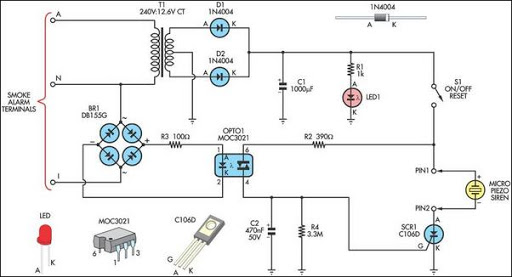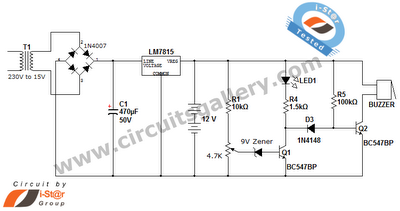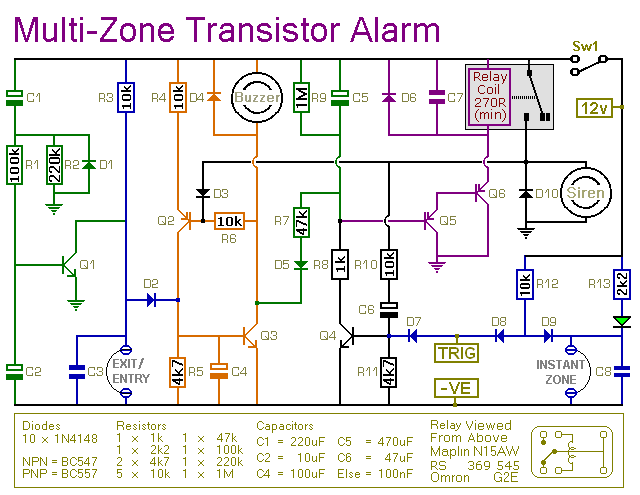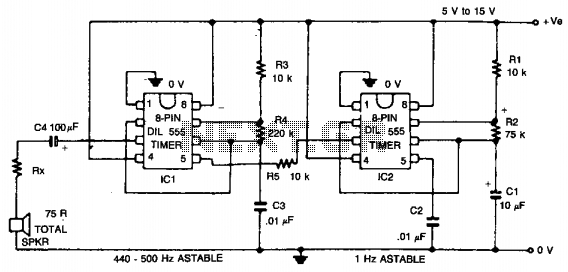
Door Knob Touch Alarm

This is a door knob touch alarm designed for home security purposes. The alarm is activated when someone touches the metal door knob. However, this circuit will not function on a fully metal door.
The door knob touch alarm circuit utilizes a capacitive sensing technique to detect the presence of a person's hand near the door knob. The core components of the circuit typically include a capacitive sensor, a microcontroller or comparator for signal processing, and an audible alarm or notification system.
When a person approaches the door and touches the metal knob, the capacitive sensor detects the change in capacitance caused by the human body. This change triggers the microcontroller, which processes the signal and activates the alarm system. The alarm can be configured to emit a sound through a buzzer or send a notification to a connected security system.
It is important to note that the effectiveness of this circuit is limited to non-metallic doors or doors with non-conductive surfaces, as the presence of a fully metal door would interfere with the capacitive sensing mechanism. To enhance the performance of the circuit, it may be beneficial to incorporate additional features such as adjustable sensitivity settings or a delay mechanism to prevent false alarms due to incidental contact.
The schematic for this circuit typically includes a power supply section, the capacitive sensor input, the signal processing unit, and the output stage connected to the alarm system. Proper layout and grounding techniques should be employed to minimize interference and ensure reliable operation.This is door knob touch alarm for your home security purpose. The alarm will be activated when someone touch the metal door knod. This circuit wont work on full metal door. Download the schematic drawing This is door knob touch alarm for your home security purpose. The alarm will be activated when someone touch the metal door knod. This ci rcuit won`t work on full metal door. 🔗 External reference
The door knob touch alarm circuit utilizes a capacitive sensing technique to detect the presence of a person's hand near the door knob. The core components of the circuit typically include a capacitive sensor, a microcontroller or comparator for signal processing, and an audible alarm or notification system.
When a person approaches the door and touches the metal knob, the capacitive sensor detects the change in capacitance caused by the human body. This change triggers the microcontroller, which processes the signal and activates the alarm system. The alarm can be configured to emit a sound through a buzzer or send a notification to a connected security system.
It is important to note that the effectiveness of this circuit is limited to non-metallic doors or doors with non-conductive surfaces, as the presence of a fully metal door would interfere with the capacitive sensing mechanism. To enhance the performance of the circuit, it may be beneficial to incorporate additional features such as adjustable sensitivity settings or a delay mechanism to prevent false alarms due to incidental contact.
The schematic for this circuit typically includes a power supply section, the capacitive sensor input, the signal processing unit, and the output stage connected to the alarm system. Proper layout and grounding techniques should be employed to minimize interference and ensure reliable operation.This is door knob touch alarm for your home security purpose. The alarm will be activated when someone touch the metal door knod. This circuit wont work on full metal door. Download the schematic drawing This is door knob touch alarm for your home security purpose. The alarm will be activated when someone touch the metal door knod. This ci rcuit won`t work on full metal door. 🔗 External reference





